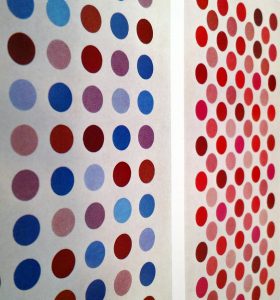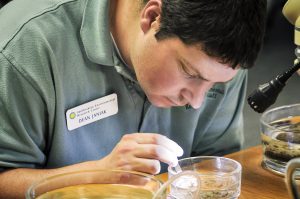Recently while searching for furniture catalogs in the Trade Literature Collection, I came across something very unexpected. The Smithsonian Institution was mentioned in one of the catalogs.
Smithsonian Libraries and Archives / Unbound
This post was written by Brittney Falter, a graduate student at George Mason University and social media intern at the Smithsonian Libraries.
Walter Crane was born on the 15th August, 1845 in Liverpool, England. His father, Thomas, was a portrait painter, which allowed Walter to take an interest in art as a child. He would often work in his father’s studio and gained knowledge and experience of the artistic world. After his father’s death, Walter was offered an apprenticeship with William James Linton at his engraving shop.[1]
The Smithsonian Libraries is pleased to offer three paid internship opportunities for the summer of 2017. Diverse project topics include art history research, special collections evaluation and educational program assessment. more »
An entry into this magical season can be gained through the Historia de gentibus septentrionalibus (History of the Northern Peoples) by Olaus Magnus, first published in Rome in 1555. It is a work greatly valued by Smithsonian curators and researchers and other scholars, since the author – a true Renaissance man – wrote down his geographical, anthropological and naturalistic observations of a land unknown to much of Europe of the time. In the present day, the book’s vivid descriptions and woodcut illustrations offer a wealth for modern study: early shipbuilding, fishing and whaling practices, meteorology, agriculture and mining techniques, warfare, daily occupations and religious practices of the Scandinavian peoples. It also provides wonderful images for what we have come to perceive as traditional for the winter holidays.

In conjunction with the exhibition “Hard-edged, Bright Color: The Washington Color School” at the American Art and Portrait Gallery (AA/PG) Library, the blog will be exploring the group of color artists to accompany the exhibit running until late spring. We’ll be exploring three of the “first generation” Washington Color School artists: Thomas Downing, Howard Mehring, and Paul Reed.

On the eastern coast of Florida, about 120 miles north of Miami, there is a very special research center: the Smithsonian Marine Station at Fort Pierce. It serves as a field station specializing in marine biodiversity and Florida ecosystems, especially that of the Indian River Lagoon – one of the most biologically-diverse estuaries in North America. The center is a destination for scientists around the world who are interested in studying the extraordinary biodiversity in the area as well as ocean and coastal processes at large.
This post was written by Amber Collins, graphic design intern during Summer 2016.
Hi, my name is Amber. I am an undergraduate student at the University of Chicago studying Visual Art. I am most interested in analog processes of image making as well as museology, particularly the curatorial design of Marcel Duchamp and El Lissitzky. I had the wonderful opportunity to spend the summer working at the Smithsonian. I interned for the Smithsonian Libraries’ Advancement Office as a Graphic Design intern. With my supervisors’ (Allie Swislocki, Anna Ogg, and Liz O’Brien) vision and guidance, I created design materials for a number of Smithsonian Libraries’ events.

